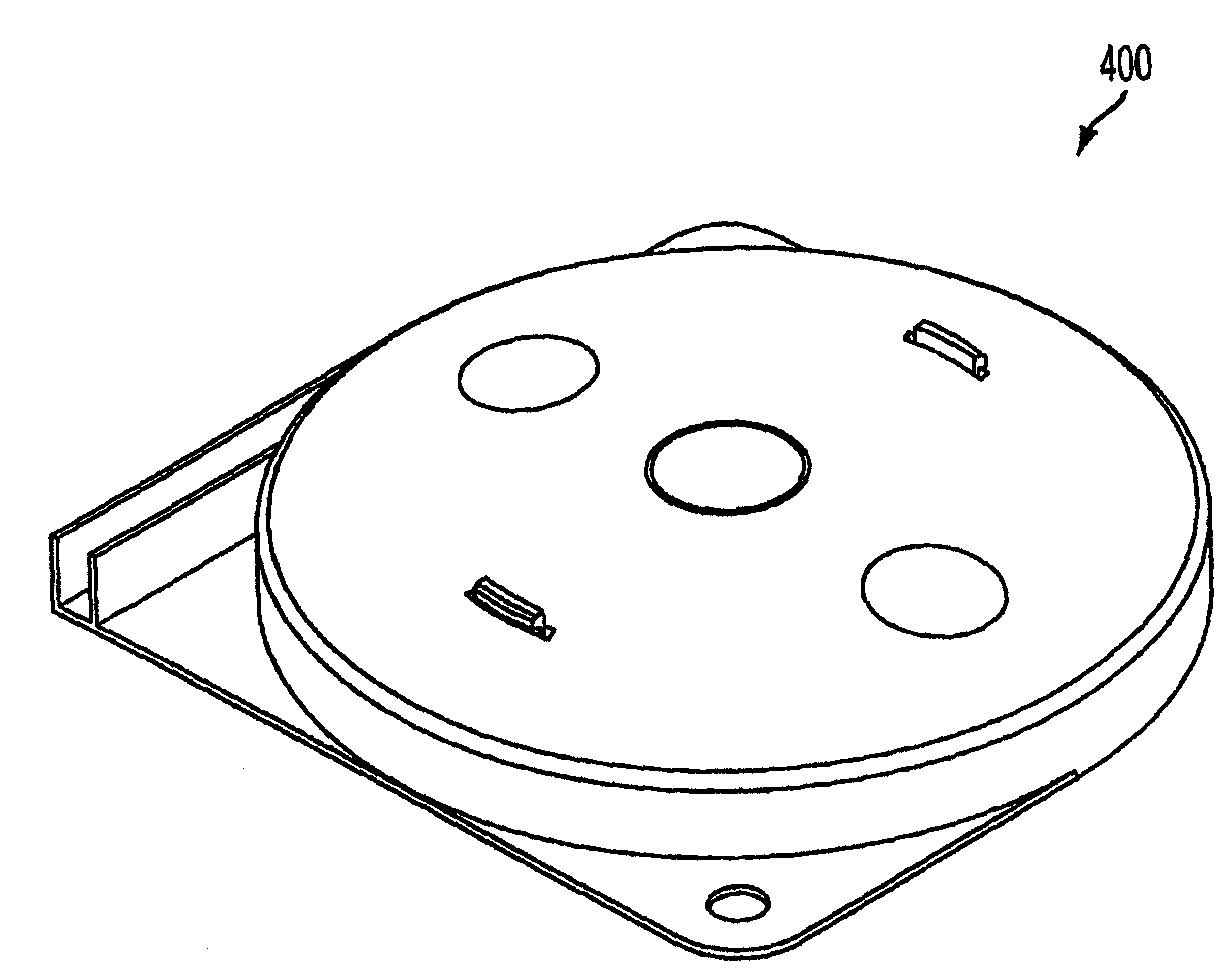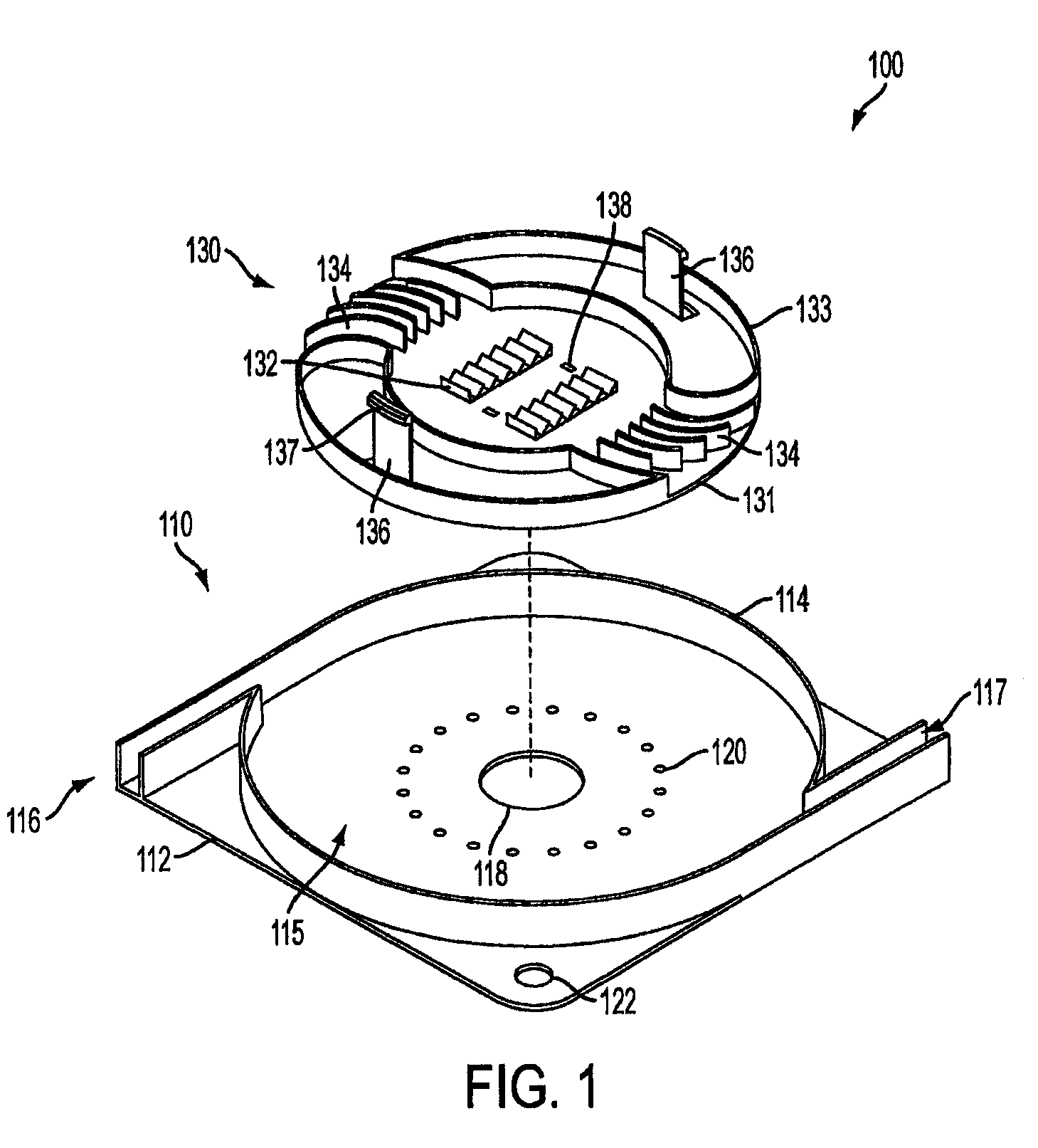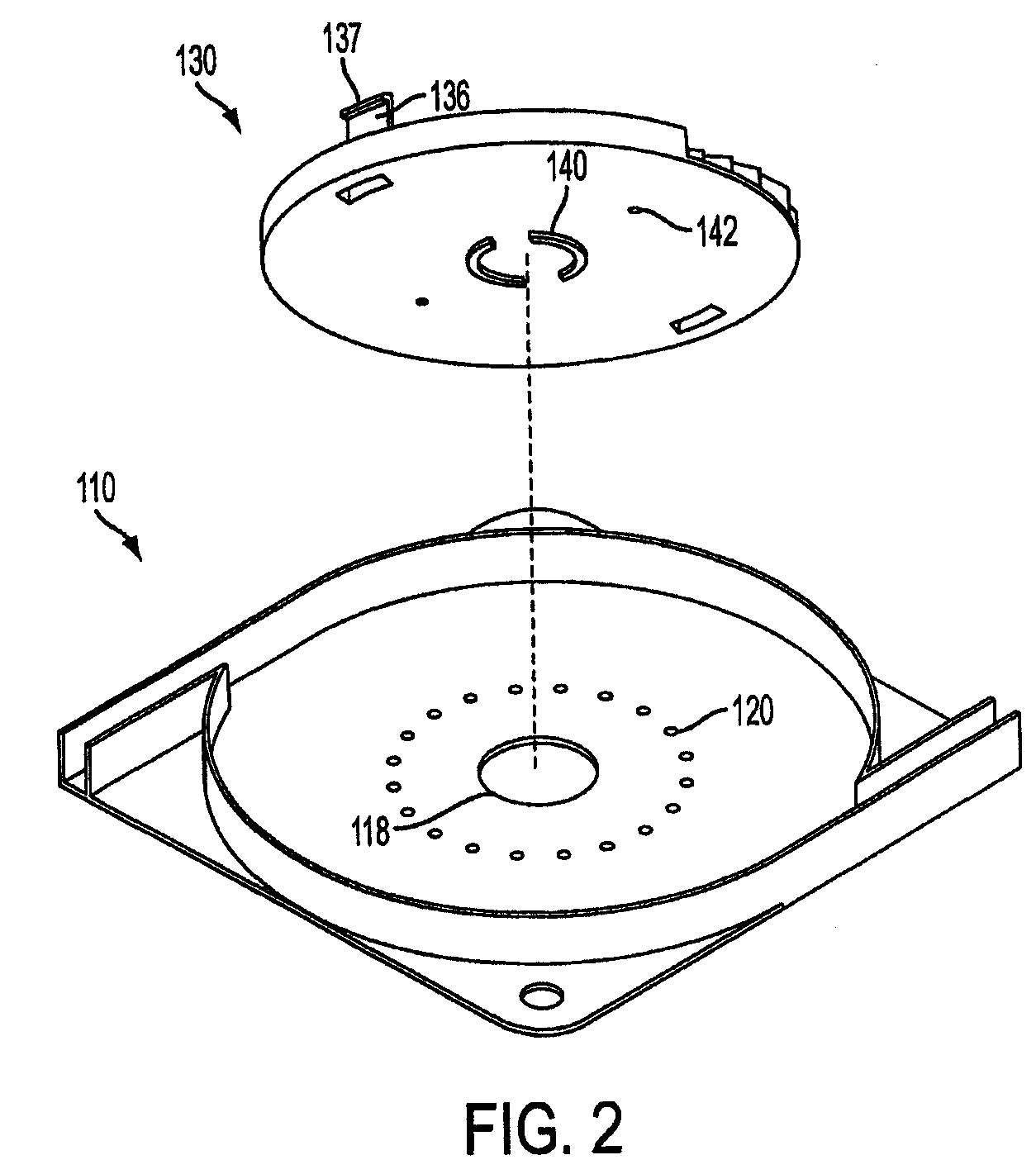Storage Device for Use in Fiber Optic Communication Systems and Method of Using the Same
a technology of fiber optic communication system and storage device, which is applied in the direction of flexible lead accommodation, optical light guide, instruments, etc., can solve the problems of laborious storage procedure, excessive complexity of fiber management, and difficulty in storing excess fiber for operators
- Summary
- Abstract
- Description
- Claims
- Application Information
AI Technical Summary
Benefits of technology
Problems solved by technology
Method used
Image
Examples
Embodiment Construction
[0039]Hereinafter, exemplary embodiments of the present invention will be described in detail with reference to the accompanying drawings. However, the present invention is not limited to the exemplary embodiments disclosed hereinafter, but can be implemented in diverse forms. The matters defined in the description, such as the detailed construction and elements, are nothing but specific details provided to assist those of ordinary skill in the art in a comprehensive understanding of the invention, and the present invention is only defined within the scope of the appended claims. In the whole description of the present invention, the same drawing reference numerals are used for the same elements across various figures.
[0040]Turning now to FIG. 1, shown is a storage device 100 according to an exemplary embodiment of the present invention. The storage device 100 may be a storage tray or a splice storage tray. Storage device 100 includes a housing 110 and a rotating element 130. The ho...
PUM
 Login to View More
Login to View More Abstract
Description
Claims
Application Information
 Login to View More
Login to View More - R&D
- Intellectual Property
- Life Sciences
- Materials
- Tech Scout
- Unparalleled Data Quality
- Higher Quality Content
- 60% Fewer Hallucinations
Browse by: Latest US Patents, China's latest patents, Technical Efficacy Thesaurus, Application Domain, Technology Topic, Popular Technical Reports.
© 2025 PatSnap. All rights reserved.Legal|Privacy policy|Modern Slavery Act Transparency Statement|Sitemap|About US| Contact US: help@patsnap.com



